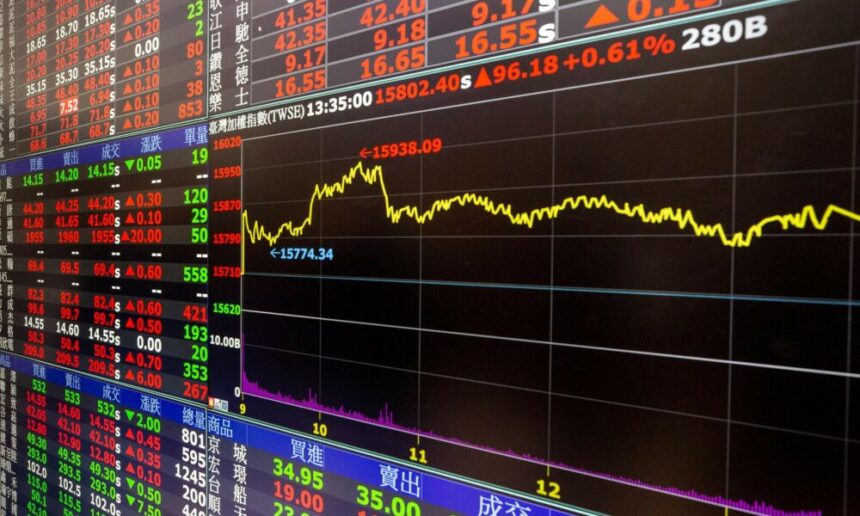Currency Options Explained
Currency options give traders the right, but not the obligation, to buy or sell a specific currency at a predetermined exchange rate within a set period. These options provide flexibility and can be used for speculation or hedging against currency fluctuations. The buyer pays a premium to the seller for the option contract, which is typically a fraction of the actual amount being traded.
Currency options can be either call options, which give the buyer the right to buy a currency at a specified rate, or put options, which give the buyer the right to sell a currency at a specified rate. The strike price is the predetermined exchange rate at which the trade will occur if the option is exercised. Understanding these basics is crucial for anyone looking to navigate the world of currency options trading.
Understanding Currency Options
Stay ahead of the market with our intraday trading app. Get real-time updates and make informed decisions on the go. Download now for a seamless trading experience.
Currency options are financial derivatives that give the holder the right, but not the obligation, to exchange one currency for another at a specific exchange rate within a predetermined time frame. These options provide flexibility for investors and companies to manage and hedge foreign exchange risk. By utilizing currency options, individuals can protect themselves from potential losses due to fluctuations in exchange rates.
Unlike forward contracts, currency options offer the advantage of protection while still allowing for potential gains if the exchange rate moves in favor of the option holder. This feature makes currency options a popular choice for those looking to mitigate risk while maintaining the opportunity for profit. Understanding how currency options work and the various strategies involved is crucial for successful trading in the foreign exchange market.
How Currency Options Work
Currency options work by giving the holder the right, but not the obligation, to buy or sell a specific amount of currency at a pre-agreed exchange rate within a set timeframe. This provides flexibility for traders to hedge against currency fluctuations while potentially profiting from favorable moves in exchange rates. Essentially, currency options operate similarly to insurance policies, providing protection against unfavorable market conditions.
When entering into a currency options contract, the buyer pays a premium to the seller for the right to either buy (call option) or sell (put option) a specified currency pair at a predetermined price, known as the strike price. The buyer benefits if the exchange rate moves favorably beyond the strike price, as they can execute the option and potentially profit from the price difference. On the other hand, if the exchange rate moves against the buyer, they can choose not to exercise the option and only lose the premium paid upfront.
Benefits of Currency Options
Currency options provide traders with a unique opportunity to hedge against currency fluctuations. By using currency options, traders can set a predetermined exchange rate at which they can buy or sell a particular currency. This helps protect against unexpected changes in exchange rates and minimizes potential losses in volatile market conditions.
Furthermore, currency options offer flexibility and versatility in trading strategies. Traders can take advantage of various market scenarios by using different types of currency options, such as call or put options. This versatility allows traders to tailor their positions to their specific risk tolerance and investment goals, making currency options a valuable tool in the foreign exchange market.
Risks of Currency Options
Trading currency options can expose investors to significant risks due to the unpredictable nature of the foreign exchange market. One of the primary risks is the potential for the option to expire out of the money, resulting in a complete loss of the premium paid for the contract. This risk is inherent in all options trading and underscores the importance of thorough market analysis and risk management strategies.
Another risk associated with currency options is the impact of market volatility. Fluctuations in currency exchange rates can lead to sudden and substantial changes in the value of options contracts. Rapid price movements can make it difficult to accurately predict the direction of the market, increasing the likelihood of incurring losses. Traders must be prepared to navigate these volatile conditions and implement appropriate risk mitigation techniques to protect their investments.
Factors to Consider When Trading Currency Options
Discover the latest trends and opportunities in trading India with the Cloud Trade app. Stay updated with real-time market data and make informed investment decisions.
When trading currency options, it is crucial to carefully assess the current market conditions and underlying economic factors that can affect the exchange rate of the currencies involved. Understanding the volatility of the currency pair you are trading and the potential impact of geopolitical events on the market is essential in making informed trading decisions.
Another important factor to consider when trading currency options is the expiration date and strike price of the options. It is essential to evaluate the time left until expiration and choose an appropriate strike price that aligns with your market expectations and risk tolerance. Additionally, considering the cost of purchasing the options and the potential return on investment is vital in determining the viability of the trade.
Types of Currency Options
Welcome to the Stock Market Learning Center. Here, you can access various resources and tools to enhance your knowledge and skills in the dynamic world of stock market investing.
When it comes to currency options, there are primarily two types: call options and put options. Call options give the holder the right, but not the obligation, to buy a specific currency at a predetermined exchange rate before a specified date. On the other hand, put options provide the holder the right, but not the obligation, to sell a particular currency at a predetermined exchange rate before a specified date.
Moreover, currency options can also be categorized as European-style options or American-style options. European options can only be exercised at the expiration date, while American options can be exercised at any point before the expiration date. Understanding the differences between these types of currency options is crucial for traders looking to mitigate risks and capitalize on market opportunities.
Difference Between Currency Options and Forex Trading
Stay updated with real-time stock market data through the Stock Market App. Track your investments, view market trends, and make informed decisions on-the-go.
Currency options and forex trading are both ways to engage in the foreign exchange market, but they have key differences. In forex trading, traders speculate on the direction in which a currency pair’s exchange rate will move. They buy or sell currency pairs directly through a broker, aiming to profit from the changes in exchange rates. On the other hand, currency options provide traders with the right, but not the obligation, to buy or sell a specific currency at a predetermined price within a specified time frame. This gives traders more flexibility and protection against adverse exchange rate movements.
Another distinction between currency options and forex trading lies in the level of risk and potential return. In forex trading, traders can experience unlimited losses if the market moves significantly against their position. Conversely, with currency options, traders have a known and limited risk since they can only lose the premium they paid for the option. However, this limited risk also caps the potential return in currency options trading compared to forex trading, where profits can be unlimited depending on market movements.
How to Trade Currency Options
To trade currency options effectively, the first step is to select a reputable broker that offers a variety of currency options to trade. Conduct thorough research to ensure the broker is regulated and has a good track record. Open a trading account with the chosen broker, making sure to thoroughly understand the terms and conditions of trading currency options before proceeding.
Once the account is set up, familiarize yourself with the available currency options and the associated expiration dates and strike prices. Develop a trading strategy based on your risk tolerance and financial objectives. It is essential to stay updated on economic indicators and geopolitical events that could impact the currency markets, as these factors can influence currency option prices. Start with a small investment to gain experience and gradually increase your trading activity as you become more comfortable with the process.
Currency Options Strategies
When engaging in currency options trading, having a well-thought-out strategy is crucial for success. One commonly used strategy is the protective put, which involves purchasing a put option to limit potential losses from a depreciating currency. This strategy allows traders to hedge against downside risk while still benefiting from any potential gains.
Another effective strategy is the covered call, where traders sell a call option on a currency they already own. By doing so, they can generate additional income from the premiums received, providing a buffer against potential losses if the currency depreciates. This strategy can be especially useful for investors looking to enhance their overall returns in a stable or slightly bullish market.








